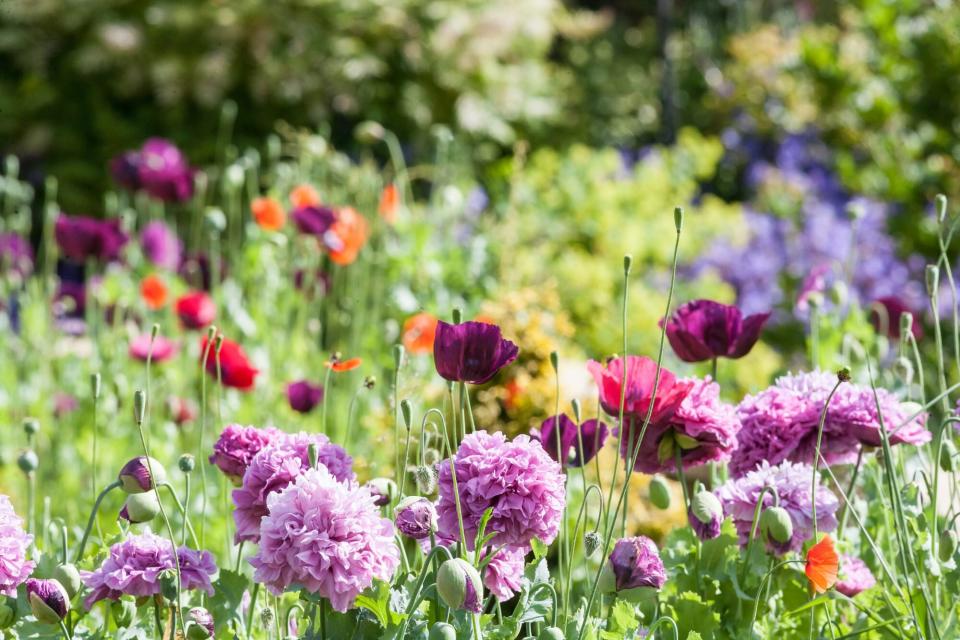When Is It Too Late to Plant Spring-, Summer-, or Fall-Blooming Flower Types?
There are certain plants and flowers that only burst into color for a short period of time. These are known as seasonal varieties, and they are best served by the temperatures and sunlight common during their preferred growth periods. Ahead, we spoke with plant expert Julie Carson, the co-founder and CEO of Plantgem, to find out when you should get your timely favorites in the ground.
Spring Flowers
Early spring flowers actually need to be planted in the fall, says Carson, which is why gardeners should put bulbs for tulips, muscari, and daffodils into the ground before it freezes for the season. "Plant these varieties late enough so that they don't want to grow too early. You should wait until October to get them in the earth," she says. As for how to do this? So long as the ground is warm enough for you to dig, you can move forward—just make sure you get bulbs in early enough so they can experience their period of "vernalization" (which happens when they endure freezing temperatures); they need this in order to bloom. Once things start to warm up, it's likely too late to plant these spring favorites.

david010167 / Getty Images
Early Summer Flowers
Carson says that early summer bloomers, like peonies, are also best planted in the fall, but as a bare root. "These can be introduced in late summer, but are best planted about four to six weeks before your ground freezes so that the roots can become established before winter," she says. You will have to get plants like the bearded iris, an '80s mainstay that is making a resurgence, notes Carson, into your beds by late summer or early fall: "Just like with fall-planted bulbs, you want to place these roots late enough so they don't want to grow right then and there. They should put their energy into developing roots, so they can grow in the spring."
Poppies also peak at the start of summer. "These are best grown from seed, since they don't like to be transplanted, and they like to germinate in the cold," she says. "Southern gardeners can plant poppy seeds in the late fall or winter months, and northern gardeners can get their seeds out in early spring, around March." If you miss the window for a cold-weather planting, pop the seeds into the fridge for a month so they can undergo a period of "cold stratification" before you get them outside, says Carson.
Late Summer Flowers
The best time to plant late summer bloomers? Towards the end of spring, after the ground has become warm. Carson explains that this sweet spot is considered the traditional "Mother's Day planting weekend" for most of the country. "Plants from the garden center will be safe to plant outside at this point, because you are generally safe from freezing temperatures at night," she notes. "Because daytime heat can wither nursery plants, you want to avoid planting under the blazing sun. Do so in the morning or late afternoon and then water deeply—they will be ready to thrive."
Fall Flowers
Ornamental kale can be planted in July for a fall display, and will last through November or December (it can survive in temperatures as low as five degrees, says Carson). "Planted too early, however, it will bolt before it colors properly; too late, and it won't have time to develop into an ornamental head before cold temps halt its growth," she says. Another pretty fall bloomer to consider? Marigolds, which should be started from seed in June. "This is a good month to plant marigold seeds outside; they will bloom well into the fall," Carson shares. "Violas are another cold-tolerant plant (they are annuals) that performs well if planted in late summer for fall color."

